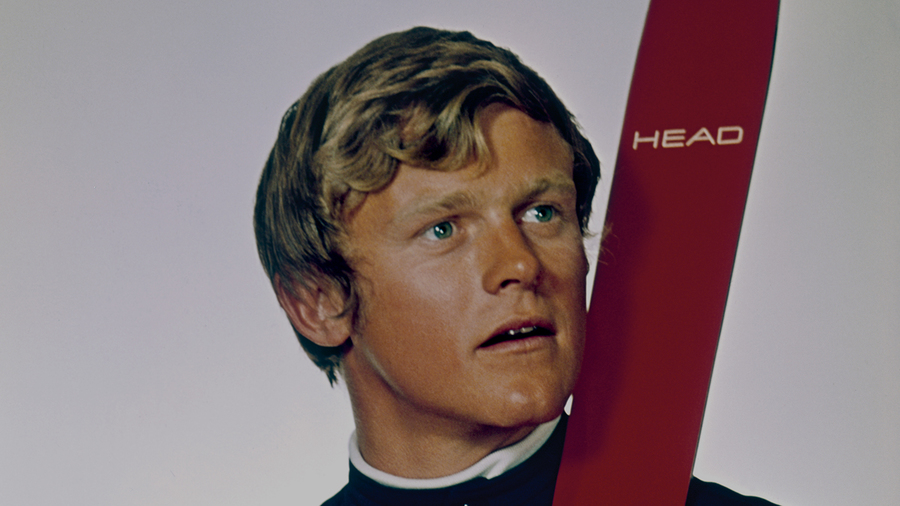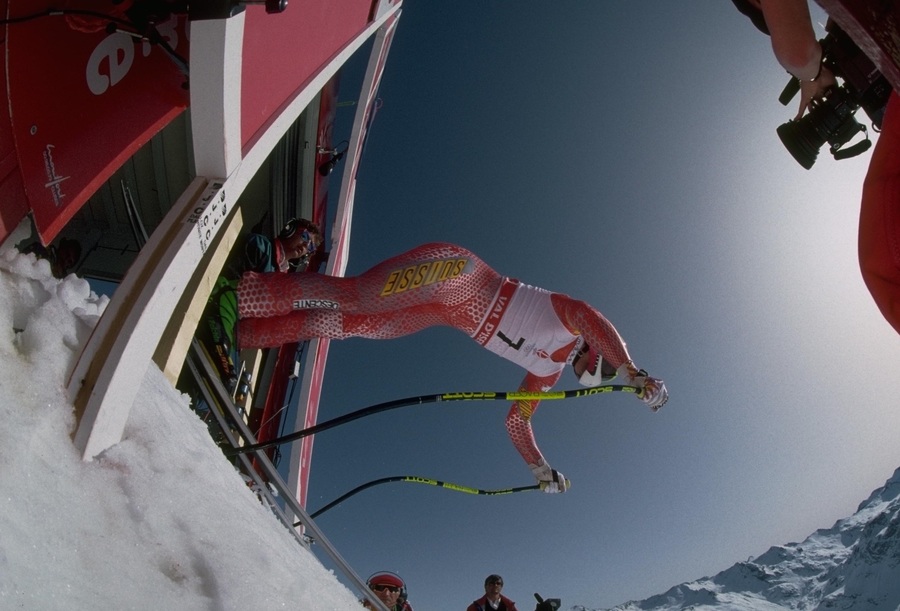
It was nearly fifty years ago when Joe Jay Jalbert first picked up a camera on the set of Michael Ritchie’s ski drama Downhill Racer and forever changed the way Alpine sports are captured on film. Jalbert spent his early days as an athlete competing for the U.S. Ski Team before being plucked from the slopes by Ritchie and his collaborator and star Robert Redford. Though initially hired as technical director and Redford’s skiing double on Downhill, he soon began having an impact on the cinematography of the film, innovating a handheld, physically agile approach that brought the exhilaration of the sport to the screen. By picking up the camera and shooting while in motion, he was able to evoke the feeling of plummeting down a mountain at lightning speed, in scenes that added an impressionistic element to Ritchie’s character study. Following his work on Downhill Racer, Jalbert spent the next decade honing his craft before being asked to create the official Olympic films The Turning Point, for Sarajevo 1984, and One Light, One World, for Albertville 1992—both of which are included in our new 100 Years of Olympic Films: 1912–2012 box set.
Now the founder of the successful New York–based video production company Jalbert Productions International, as well as a recent inductee into the U.S. Ski Hall of Fame, Jalbert dropped by our office recently to chat about the art of capturing skiing on-screen.
How did you first meet Robert Redford and become involved with Downhill Racer?
Initially, Redford and Michael Ritchie hired me specifically as a technical director because of my U.S. Ski Team background. When I met with them for the first time in Los Angeles, they had a bit part that they needed to be filled, so they thought, why not kill two birds with one stone? I was cast as Tommy Erb, the racer who falls and breaks his leg at the beginning of the movie. So that involved me as an actor, and I became a member of the Screen Actor’s Guild.

What spurred you to pick up the camera and begin shooting the ski racing scenes yourself?
When we were on location in Europe, the cameramen kept trying to do these tracking shots—nowadays with GoPros it’s a lot easier, compared to when we had to carry a 35 mm Arriflex 2C and a battery belt that weighed forty-five or fifty pounds—and I quickly saw that a toboggan with a cameraman on it, chasing a downhill racer that was going eighty miles an hour, did not work. So I literally just said, “Guys, give me the camera,” and I started skiing alongside the other stunt doubles, tracking Redford, and eventually carrying that Arriflex down the biggest Alpine downhills in the world. And that was it—I took it upon myself to say, “Hey, give me the camera—let’s go.” The learning curve was very small, and the concept came naturally to me.
After Downhill Racer I worked on the movie Snowball Express, in which I did the stunt skiing and the skiing cinematography. I don’t recall anybody at the feature-film level doing anything like this. I was smitten with photography. What better way to earn a living, if you can manage? So I went out and found clients in the ski industry and then took it upon myself to develop mounts that would go on skis and carry these cameras. I would ski downhill courses with them, shooting forward and backward, so I just developed these techniques on my own. One thing led to the next and it was easy to apply these techniques to the production of our Olympic films.
Were there any scenes that were the most challenging to shoot?
Probably the most challenging scene is the one where Redford runs Jim McMullan’s character into the wall. We knew we wanted a fairly long segment, which would require a lot of different angles and cuts. We probably spent two weeks just shooting that scene. But the hardest part was the fall into the wall. We put bales of hay under the snow and did that in one take. That was the only time we filmed that shot, but we nailed it. We got lucky. And I still think that sequence has stood the test of time. In my documentaries and in my later work, I built on those thoughts and the innovation that I experimented with.
But I had a lot of help, because back when we made Downhill Racer, I didn’t even know what an F-stop was or how to load a magazine. I wasn’t a professional cinematographer, I just loved trying to capture things. I’m totally self-taught; the majority of what I learned in the early years was from American Cinematographer, and then I taught myself how to load cameras and how to edit. I’ve always preached that the best directors and best cinematographers should be editors as well. I used to edit everything I shot, and it taught me a lesson in what to shoot and how to shoot.
After working on Downhill Racer, how did you transition to working in the film industry?
After working on Downhill Racer, I worked with Redford on Butch Cassidy and Jeremiah Johnson. So then I was suddenly in the film business and living in New York, and one thing led to another and I’m out here in the street on Madison Avenue beating on doors and looking for sponsors to do ski documentaries. I easily segued into the ski industry because of my racing background, so it was natural for me to come up with sponsors to do ski documentaries, and I produced about a hundred of them in my early career in the seventies. I’ve been in the production business for forty-seven years, and I’ve now produced upward of six to seven hundred sports documentaries.

Can you tell me about how you and your collaborators conceived of the themes for your Olympic films?
I think that our Olympic films were really an outgrowth of the sponsored Alpine ski racing and Nordic films that I had directed and produced, which were made from the late seventies into the early eighties. As a company, we’d done more than a dozen official films for the Alpine World Ski Championships as well as Nordic films. I always preach to my son Jay, who now runs our creative team and travels the world producing our films, that you need a concept and an idea—even if it’s a sports documentary and not a feature script. So for Sarajevo 1984, which I produced and codirected, we had a concept, and it was called A Turning Point. We felt that the Olympics impacted many people’s lives, and for many people it really does become a turning point. That might sound trite, but if you look at the documentary, you’ll see that this is woven throughout the treatment, the writing, the feel, and the look of the entire show. Then for Albertville 1992, our creative title was One Light, One World, and the basis of that was an evolution of the Olympic themes of Citius, Altius, Fortius [faster, higher, stronger], and that this one light could symbolically be the torch that might burn in someone’s heart, or might be a light that would unify the world.
Hillary Weston is staff writer and social media director at the Criterion Collection. Her work has appeared in Film Quarterly, BOMB, Interview, and BlackBook.
from The Criterion Current http://ift.tt/2E26vLt
Nessun commento:
Posta un commento